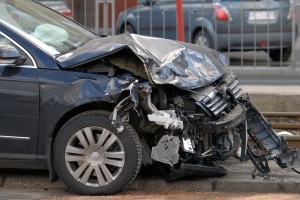








 It’s a great success story that most of us probably haven’t heard very much about. America’s roads have become far safer across the past 20 years. By just about any measure, travelers are much less likely to be injured or killed in a motor vehicle accident than they were in the late 1980s and early 1990s. Here are a few statistics demonstrating how much safer we are in our cars.
It’s a great success story that most of us probably haven’t heard very much about. America’s roads have become far safer across the past 20 years. By just about any measure, travelers are much less likely to be injured or killed in a motor vehicle accident than they were in the late 1980s and early 1990s. Here are a few statistics demonstrating how much safer we are in our cars.
Vehicle Miles Driven – Americans traveled 2,172 billion miles in 1991 and 2,979 billion miles in 2009. That’s a 37% increase.
Motor Vehicle Accidents – During the same 1991-2009 period, the number of accidents on U.S. roads actually decreased by 10%, dropping from 6,117,000 to 5,505,000. So even though we’re traveling more miles, we’re having fewer accidents.
Occupant Fatalities – The number of motor vehicle occupants killed in accidents during 1991 was 31,934. That number declined by 23% to 24,474 in 2009. The fatality rate per 1,000 accidents dropped from 5.2 to 4.4 persons. That means that when we do have an accident, it’s become less likely that someone traveling in the vehicle will be killed.
Occupant Injuries – The statistics show an even more positive trend with respect to injuries. The number of occupants injured in accidents fell 29% from 2,850,000 in 1991 to 2,011,000 in 2009. The injury rate per 1,000 accidents declined from 465.9 persons to 365.3. Simply put, our motor vehicle accidents seem to be injuring fewer drivers and passengers when they do occur.
It’s likely that this general trend toward safer roads is being driven by a combination of factors. It could be the way we’re driving that’s producing fewer, less serious crashes. It could be the way our roads are designed, maintained or policed. It could also be the active and passive safety features now included in many of our vehicles. But whatever the reasons, we can all agree that this is good (if under-reported) news for our nation’s travelers.
But what if you are one of the two million unlucky ones this year?
As encouraging as this trend is, it obviously means little to you if you or someone you care about is actually injured in a car accident. Even in cases where drivers and passengers walk away from a wreck believing they’re “uninjured”, accidents can have profound, long-lasting health consequences for those involved. It’s not uncommon for some types of symptoms to appear only gradually days or weeks after the event itself, delaying effective diagnosis and treatment. Symptoms may also come and go intermittently, making it more difficult to associate them with the accident.
Fortunately, there are things you can do to safeguard your health and improve your chances of a more rapid, complete recovery following an auto accident. Clinical studies have demonstrated that chiropractic care can shorten recovery time and decrease the amount of permanent physical damage sustained in a collision.
Finally, recognize that you may be at increased risk of developing chronic problems. Be sure to tell your doctor if any of the following warning signs apply:
An auto accident can affect your health (and your lifestyle) for years if you don’t receive the proper treatment. So if you or someone you care about has been injured in a collision, please call our office and make an appointment today. Chiropractic care can help put your recovery in the fast lane!
 Pain is a useful indicator that something is wrong with the body that requires attention. Acute pain tends to occur suddenly, often in response to an injury or a change in mobility or function. For example, if you run into a door and hurt yourself, or awaken with a stiff neck that was not there before, that is acute pain.
Pain is a useful indicator that something is wrong with the body that requires attention. Acute pain tends to occur suddenly, often in response to an injury or a change in mobility or function. For example, if you run into a door and hurt yourself, or awaken with a stiff neck that was not there before, that is acute pain.
Chronic pain may also start suddenly, but what differentiates it from acute pain is that it persists; it extends beyond the normal range required for healing. Accidents and diseases can result in pain that lingers long after the event that caused it. The problem is that the longer we feel a chronic pain, the more our bodies and brains compensate and change to accommodate it. This can lead to not only a decreased sense of well-being but actual degradation of our physical health. Medical treatment of chronic pain tends to rely on drugs to mask or reduce the pain, but rarely addresses the root cause of the pain. Chiropractic treatment has been found to be a safe, drug-free, non-invasive treatment for many types of pain, but may be most effective when dealing with chronic pain.
We can define chronic back pain as pain that has persisted longer than three months. The pain may be neuropathic (caused by actual nerve tissue damage, and usually experienced as a sharp pain or burning sensation), or nociceptive (caused by an injury or a source outside the nervous system, experienced as a constant dull ache). This type of chronic pain commonly occurs in adults between the ages of 30 and 50, but may also appear in other age groups as a result of lifestyle practices or injury.
Chronic pain due to nervous system irritation or nerve injury can lead to a number of corollary symptoms – lower back pain, changes in posture or stature, lack of mobility, problems with balance, and over time, actual muscle loss. Chiropractic can be very effective in treating these conditions. Because the long-term goal of chiropractic is to create a healthy spine as the basis for general wellness, it can also help to reestablish normal functioning and eliminate the root causes of chronic pain. Many chiropractors are also trained in methodologies such as trigger point therapy and massage, which have been shown to alleviate chronic pain. Your chronic pain treatment may also include some form of exercise plan, either on your own or under the supervision of a physical therapist, to help you rebuild your strength in the affected areas.
If you are experiencing this kind of pain, consult with your chiropractor to assess whether it may be successfully treated with chiropractic adjustments and/or related therapies. Chiropractic care can be very effective in treating chronic pain on its own, but also integrates well with traditional medical care, without the risk of drug side effects or surgery. Chiropractic treatment may be an effective therapy for you to help with long term pain management, and possibly achieve the elimination of the pain itself.
 Whiplash is defined as an injury to the neck, by moving the head forward and then backward in a rapid fashion that places strain on the neck muscles and ligaments. Whiplash is most common when the victim has been rear-ended, or hit from behind by another vehicle but can result from physical abuse (such as shaken baby syndrome) or contact sports. The symptoms of whiplash vary and are not limited to –
Whiplash is defined as an injury to the neck, by moving the head forward and then backward in a rapid fashion that places strain on the neck muscles and ligaments. Whiplash is most common when the victim has been rear-ended, or hit from behind by another vehicle but can result from physical abuse (such as shaken baby syndrome) or contact sports. The symptoms of whiplash vary and are not limited to –
It is also possible that you will have no observable symptoms shortly after the accident with the onset of pain or other complications several weeks or months later. That’s why it is important that you are evaluated immediately after any auto accident even if you don’t have any pain.
Certain types of pain are potential medical emergencies and should be treated as such. These include:
The primary objective of the chiropractor is to use gentle manipulations that treat the spine and discs so that they are aligned properly. These manipulations are also designed to reduce muscle spasms and rebuild muscle strength with the aid of physical therapy.
The chiropractor will first focus on reducing inflammation and check the neck, mid and low back. From there, the range of motion, disc injuries and muscle spasms will be examined. Other factors that will be noted are walking, posture and spinal alignment. A comprehensive exam provides an understanding of the individuals’ body mechanics. X-rays and /or magnetic resonance imaging (MRI) may be taken along with the patient medical history to determine whether they can be treated.
Some cases of whiplash may only require ice and heat therapy to reduce inflammation and relax the muscles, respectively. Non-medicinal treatment may include acupuncture, massage or Transcutaneous electrical nerve stimulation (TENS). You should not try to make a treatment assessment yourself. Only a trained professional can evaluate your whiplash properly.